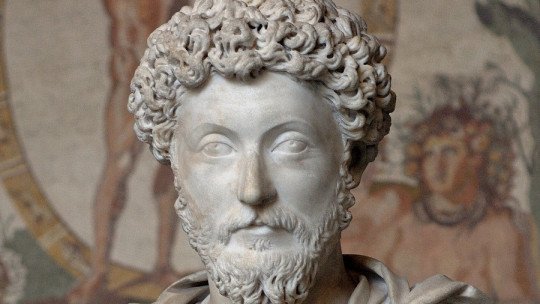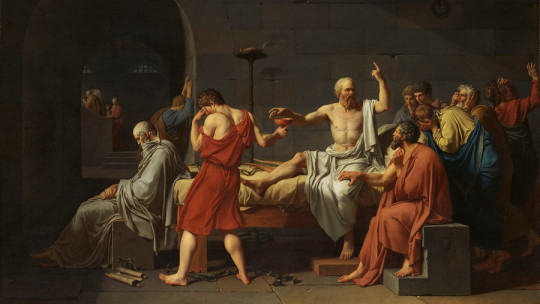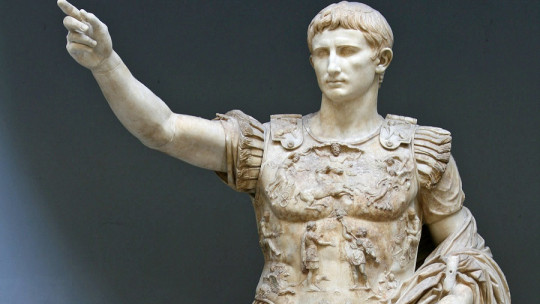Founded by Zeno of Citium in the 4th century BC, Stoicism is one of the best-known Hellenistic schools , since its influence deeply marked the Roman Empire and gave it such relevant figures as the philosopher Seneca or Marcus Aurelius, the philosopher emperor. The key to this success must be found in the importance given to virtue as the basis of all his ethics, something that fit perfectly with the austere and martial Roman world.
But Stoicism also influenced Christianity or, rather, both currents found meeting points, especially in the idea of total submission to the designs of divinity, a universal law against which human beings had nothing to do except resign themselves. and accept. In today’s article we talk about Stoicism, the most influential school of Hellenistic philosophy in the ancient and modern world.
What is Stoicism?
We call Stoicism or the Stoic school the philosophy founded by the aforementioned Zeno of Citium (4th century BC) , a merchant who, according to legend, lost all of his ship’s cargo in a shipwreck. Instead of getting irritated and cursing fate, it seems that the tragic event caused Zeno to take a keen interest in philosophy; especially, for the way of following a straight and calm life despite the vagaries of destiny.
Imbued with the teachings of distinguished Athenian philosophers such as Stilpo of Megara (360-280 BC) and Crates of Thebes (368-288 BC), Zeno founded the Stoic school in the famous portico or stoá which gives name to his philosophy (stoicism comes from stoá poikile). His ideas include precepts of the Cynics, championed by the extravagant Diogenes of Sinope (412-323 BC) ; but Zeno goes much further, especially on the topic of ethics, the preferred area of Stoicism. Let’s see below what his teachings consist of.
Nature and virtue
For the Stoics, everything moved according to divine laws, which imbued the world with inevitable causality. Therefore, The true virtue was to obey these laws, since the human being lacks the power to change this eternal mechanism To achieve this state of virtue that leads to happiness, the Stoic must seek control of his passions, disorders that lead to chaos as they rebel against the established order. Only through this control (linked not so much to inhibition but rather to wisdom) can the Stoic calm his spirit and, therefore, find the inner peace necessary for happiness.
Although ethics was the preferred framework for action for Stoic philosophy, this does not mean that they forgot the other classic themes of Greek philosophy: physics and logic Regarding the first, they maintained the existence of a fire that fed the entire universe and from which all things emanated. This fire, identified with the divine logos, was the primordial motor and animator of all cause-consequence.
However, this does not mean that the Stoic did not take responsibility for his actions. Divinity established the order of everything , but that did not exempt human beings from the responsibility of setting in motion one of their causal mechanisms. Thus, becoming aware of one’s own actions was essential to achieve ataraxia and thus reach serenity of spirit.
The wise man above all things
The main goal of Stoicism, then, was to become wise. But they did not understand wisdom as the maximum knowledge, but rather it was a kind of existential imperturbability.
The true wise man remains unscathed by the continuous movement of life , whether they are positive or negative events. Because the serenity of the soul was not only contemplated in the face of a tragic event, but also in the face of a successful one, since both things, sadness and joy, can endanger the long-awaited inner peace.
This brings us to the topic of suicide, which in Stoic philosophy acquired almost heroic overtones. If virtue is the preference in life (since without it inner peace is impossible) and it is achieved by accepting the dynamics of nature (that is, divinity) and exercising iron control over the impulses that can unbalance it, the A wise man has the right to end his life when he perceives that he is not being allowed to develop this virtue.
In this sense, The Greek philosopher Socrates, despite not having been a Stoic thinker, was an example for this school to follow , since he was forced by the Athenian authorities to commit suicide using hemlock. In this case, Socrates not only exercised his right to take his own life, but also refused to avoid his fate, another characteristic of Stoic philosophy.
Stoic philosophy in Rome
As we noted in the introduction, Stoic philosophy deeply penetrated Roman culture. The ideas of strength of the soul in the face of adversity and the austere and upright spirit that Stoicism preached, as well as its insistence on the control of passions, married perfectly with the Roman virtus, especially after the fall of the Republic and the birth Empire. Thus, The doctrine spread very quickly throughout the Roman world and produced great thinkers such as Seneca, Epictetus and the emperor Marcus Aurelius, among others.
Seneca, the great wise man of Rome
Born in Corduba (Córdoba) at the beginning of our era, Lucius Anneus Seneca represents one of the greatest exponents of Roman stoicism. When he was very young he moved to the Eternal City from his native Hispania to follow the cursus honorum, the course of study reserved for patricians, and became a lawyer. However, Seneca was very interested in philosophy, especially the Stoic current, so he soon began to educate himself in it.
Upon the death of Emperor Claudius (who had sent him into exile), he returned to Rome called by Agrippina, the widow, to take charge of the education of her son Nero. Despite Seneca’s teachings, the young man became a complicated and capricious emperor, with a lifestyle far removed from the Stoic model. Perhaps disappointed, Seneca distances himself from politics and, at the age of forty, begins his literary production where he expresses all his wisdom.
In a similar way to what happened with Socrates, Nero forces his former tutor to commit suicide, a condemnation that the Stoic accepts without hesitation, as the Greek philosopher had already done several centuries before.
Epictetus, the former slave who was a philosopher
After receiving his emancipation, the former Roman slave Epictetus settled in Nicopolis, on the Adriatic, and opened a school of philosophy whose main basis was Stoic ethics. The famous freedman did not leave anything in writing, but one of his students, Arrian, compiled the class notes and published them under the title of Rantsa summary that became very popular not only during the Empire, but also during Renaissance Humanism.
Epictetus promoted inner freedom as the only possible We must keep in mind that, for the Stoics, “freedom” was precisely the full acceptance of the mechanisms of nature and living in accordance with them. Very well known is the maxim that the former slave repeated in his lessons: “Humans are disturbed not by things, but by their opinion about them.” In other words; It is resistance to acceptance that produces suffering.
Marcus Aurelius, the philosopher emperor
If Plato had lived in the time of the emperor Marcus Aurelius (121-180 AD) he would undoubtedly have been very satisfied, since the Roman realized the Platonic utopia of the ruler-philosopher that the thinker includes in his Republic.
Indeed; Marcus Aurelius has gone down in posterity as an emperor inclined to virtue , who tried throughout his life to achieve wisdom and, to do so, cultivated Stoic philosophy with absolute devotion. Famous are their Meditationswritten in the privacy of his bedroom like a personal diary and which he had no intention of publishing, but which have become one of the symbols of stoicism.
In the Meditations, Marcus Aurelius questions existence, pain and death and collects precepts and maxims that draw on the purest stoicism, with the aim of facing the ups and downs of life with dignity and strength. Even today it is one of the most read philosophy manuals in the world, perhaps because of its surprising relevance.
The Stoic school and Christianity
There is no doubt that Stoic thought has many common places with Christianity. For example, the unabashed acceptance of the designs of divinity and the avoidance of passions, with the aim of directing one’s existence towards virtue, the only source of happiness.
However, there are also differences that deserve to be highlighted, because they are often overlooked. The philosopher María Zambrano (1904-1991) commented that stoicism is halfway between philosophy and religion or, rather, it is a mixture. While Christianity establishes faith as a pillar for acceptance and, therefore, for the imperturbability of the soul, Stoicism makes the human being the protagonist in the process, since it is he who accesses wisdom, which is not granted by God as a gift, as is the case with Christianity. On the other hand, Christianity has an evident universal vocation, as a community of believers. Stoicism, for its part, represents a method of “individual happiness”, as stated by Paul Veyne (1930-2022), a historian specializing in ancient Rome.
There are some letters that the apostle Paul and Seneca supposedly exchanged, which most historians consider apocryphal. However, as Wilmar de Jesús Acevedo Gómez demonstrates in his study Nascent Christianity and Roman Stoic philosophy, are sufficient to analyze both currents. So, While Paul of Tarsus is immersed in a search that culminates in an encounter that transcends limits (since it is about something beyond the human), Seneca immerses himself in an individual path which goes through a “quiet wait” for the arrival of death, without any promise of salvation.









